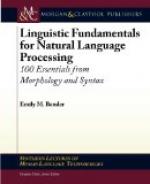That certain words are prepositions, there can be no doubt, because the books say they are; but why they are so, is quite another matter. All we desire is to have their meaning understood. Little difficulty will then be found in determining their use.
I have said they are derived from verbs, many of which are obsolete. Some are still in use, both as verbs and nouns. Take for example the word =with=. This word signifies joined or united. It is used to show that two things are some how joined together so that they are spoke of in connexion. It frequently occurs in common conversation, as a verb and noun, but not as frequently in the books as formerly. The farmer says to his hired man, “Go and get a withe and come and withe up the fence;” that is, get some pliant twigs of tough wood, twist them together, and withe or bind them round these posts, so that one may stand firm with, or withed to, the other. A book with a cover, is one that has a cover joined, bound, or attached to it. “A father with a son, a man with an estate, a nation with a constitution.” In all such cases with expresses the relation between the two things mentioned, produced by a union or connexion with each other.[6]
=In= is used in the same way. It is still retained as a noun and is suspended on the signs of many public houses. “The traveller’s inn,” is a house where travellers in themselves, or go in, for entertainment. It occurs frequently in Shakspeare and in more modern writers, as a verb, and is still used in common conversation as an imperative. “Go, in the crops of grain.” “In with you.” “In with it.” In describes one thing by its relation to another, which is the business of adjectives. It admits of the regular degrees of comparison; as, in, inner, innermost or inmost. It also has its compounds. Instep, the inner part of the foot, inlet, investment, inheritance. In this capacity it is extensively used under its different shades of meaning which I cannot stop to notice.




